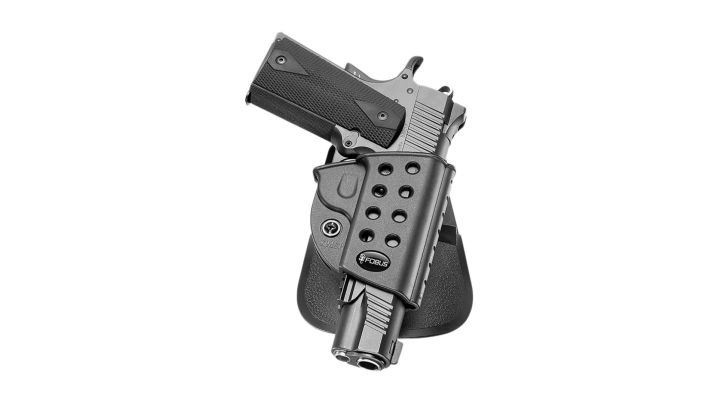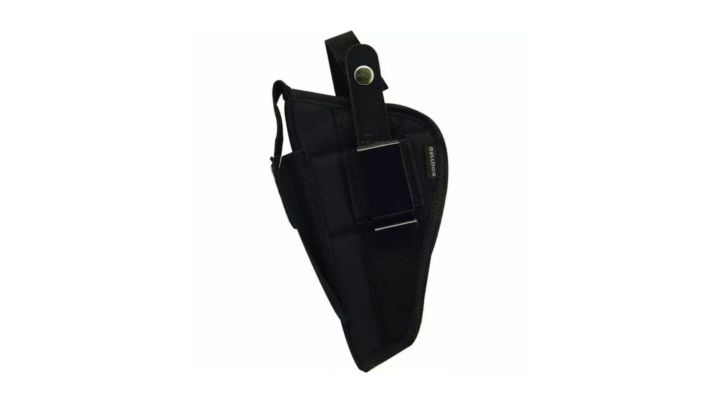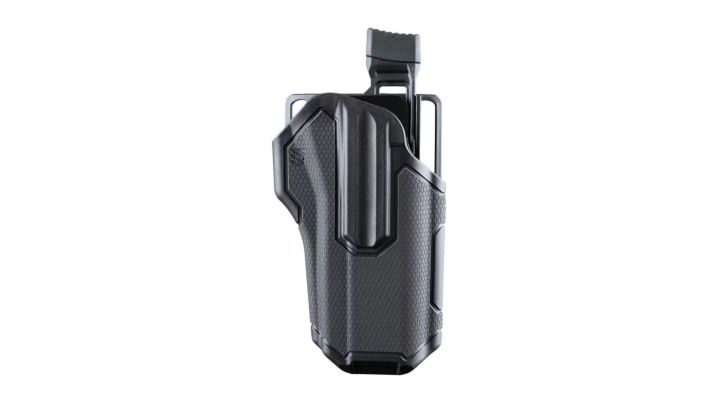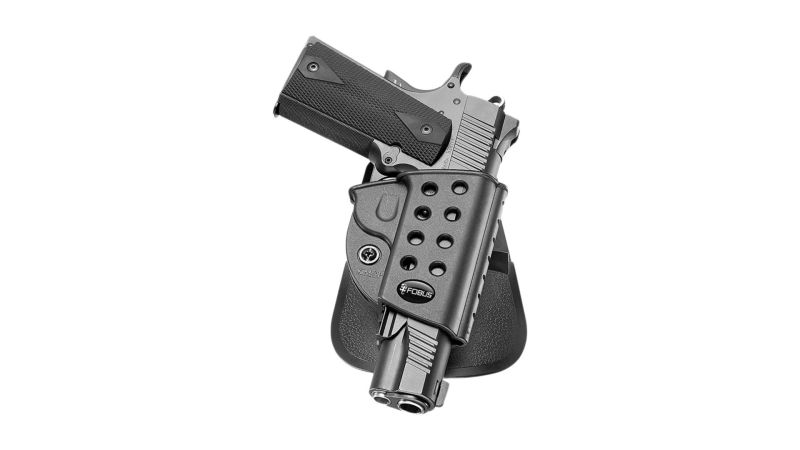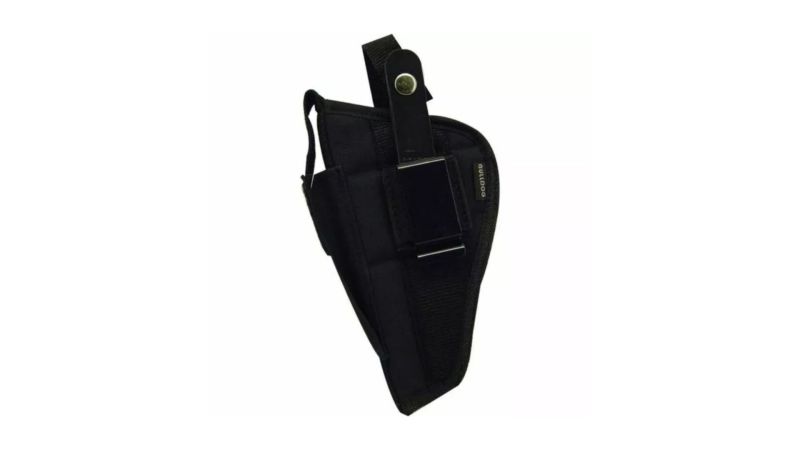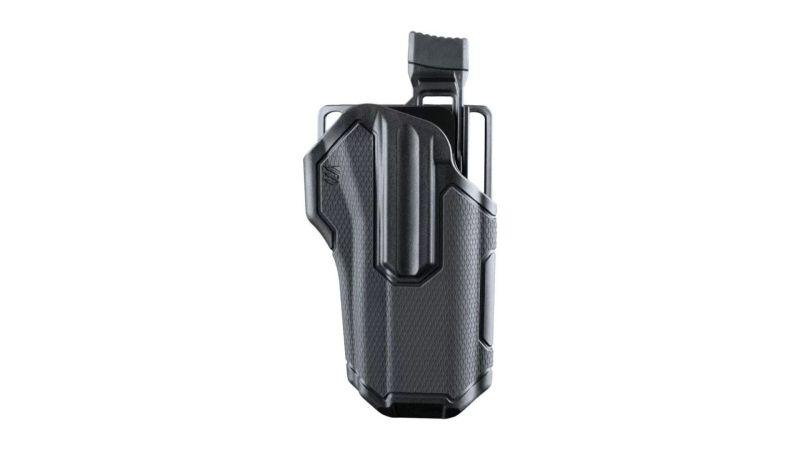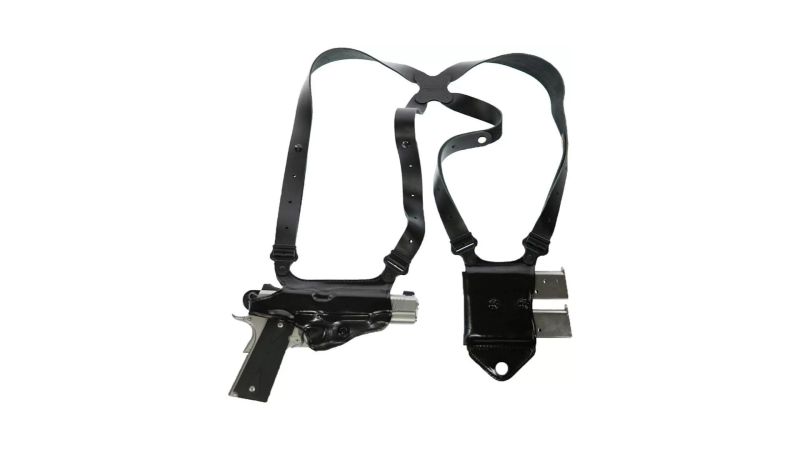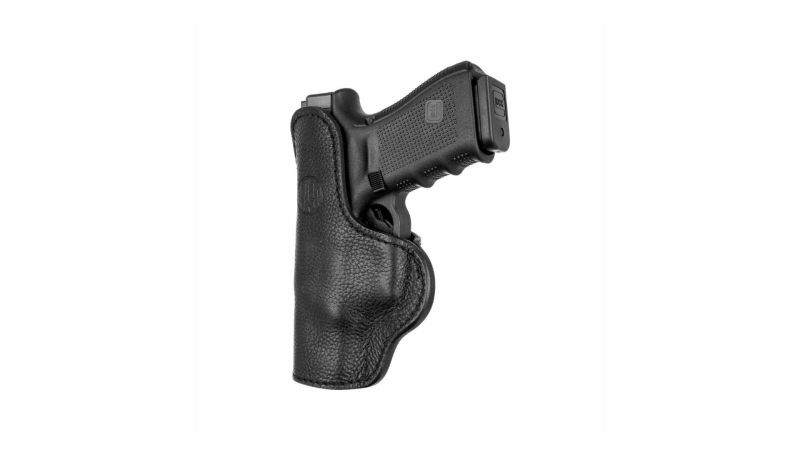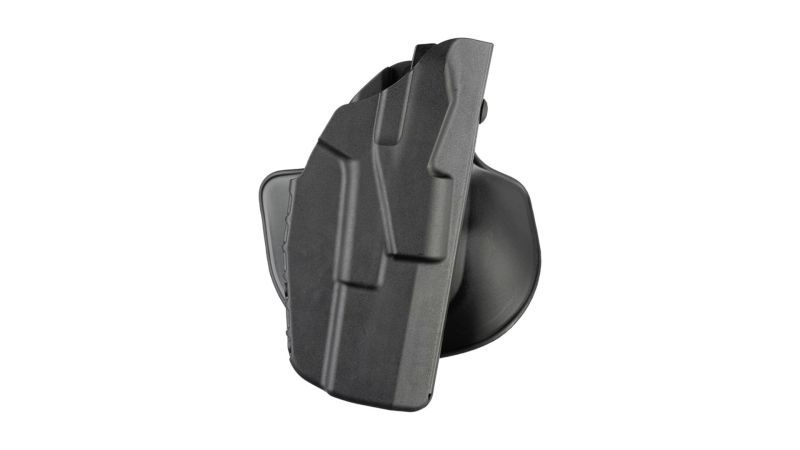We may earn revenue from the products available on this page and participate in affiliate programs.
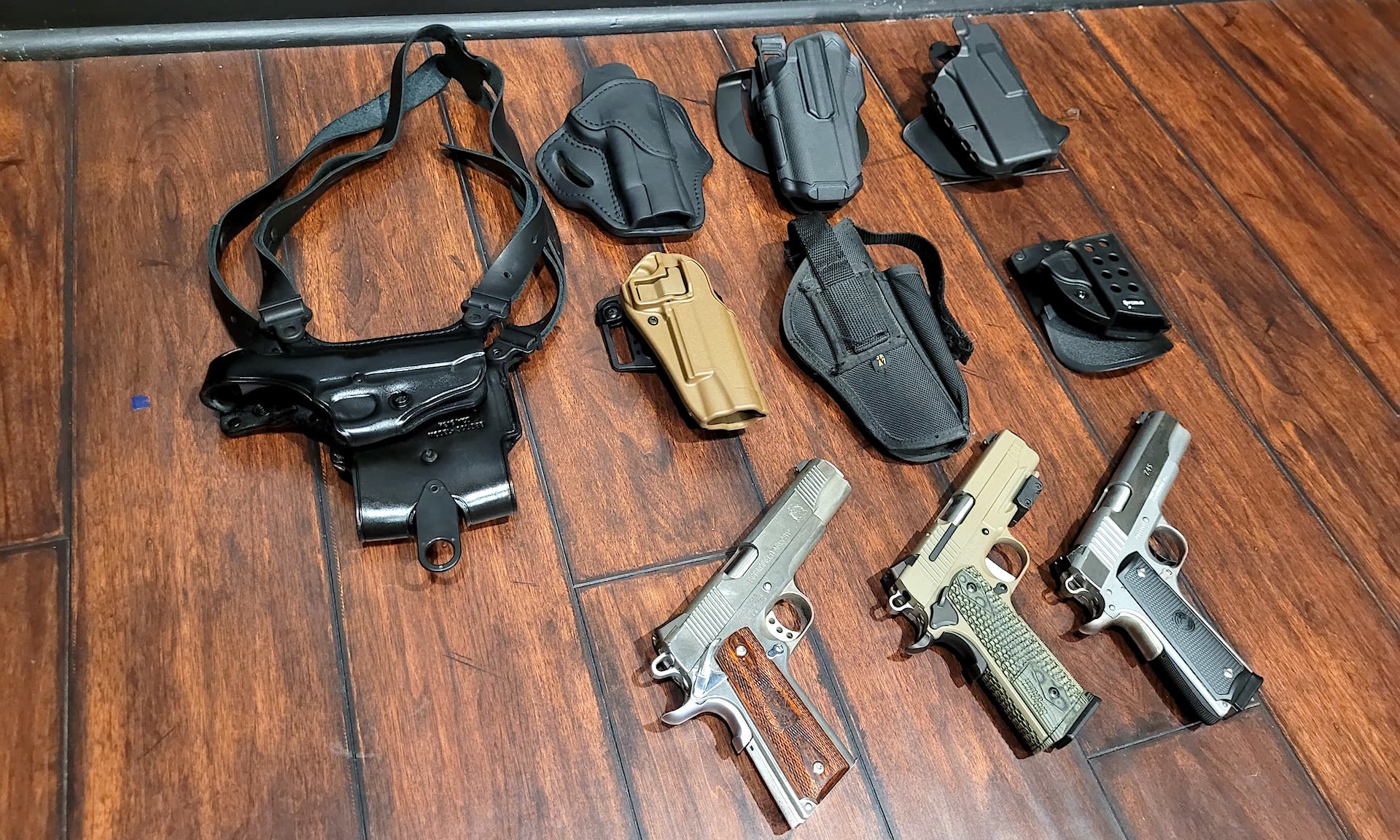
The 1911 pistol is one of the longest-running service weapons in military history. It’s rugged, accurate, and packs a massive punch. Compared to modern duty weapons, though, it’s heavy and gets even heavier when you load it. So, if you decide to carry one, finding the best 1911 holster is an absolute must.
Because the 1911 handgun has weight issues — even ones with a smaller five-inch barrel — any type of realistic concealed carry option is out of the question. Therefore, we focused on the top picks for paddle, belt, and shoulder carrying holster options so you can shop confidently knowing we did the real work. We’ll also explain how we found our choices and evaluated them against the competition.
- Best Overall: Fobus R1911
- Best Value: Bulldog Extreme FSN 15
- Honorable Mention: Blackhawk Omnivore
- Best Shoulder Holster: Galco Miami Classic II Shoulder Holster
- Best Quality: 1791 Gunleather Ultra Custom
- Best Retention: Safariland ALS Concealed
How we tested
Over the years, I’ve carried and owned several 1911 pistols. In addition to my personal experience, I have had extensive military training and experience shooting and carrying the handgun. So, I have intimate knowledge of the pros and cons of the iconic design.
The holsters picked for this review were selected based on their overall rating on popular ecommerce sites. I started with 1911 holsters with the most positive reviews and then narrowed it down to ones with ideal specifications and features. I looked for the best-rated leather, plastic, paddle, and shoulder holsters.
Also, given that patents for the 1911 pistol are in the public domain, there are countless variations of the design. Therefore, I used three different 1911 handguns to test holsters. These include the Para 1911 with a six-inch barrel; a Springfield 1911 Milspec with a six-inch barrel; and a Sig Sauer 1911 with a five-inch barrel and rail. Each pistol had a turn with each holster (when applicable).
I tested each holster for comfort, retention, and ease of use. For the former two, I wore them with jeans and a leather belt and I also tried them with a thicker military-issue Velcro tac belt during normal, everyday activities. I wore each one for several days and during hikes longer than a mile. And for the latter, I drew the gun from the holstered position some 20 times apiece to check for smoothness of pull and overall ergonomics.
At Task & Purpose, we know and love holsters. We’ve written about everything from extremely popular designs like Inside the Waistband and concealed carry holsters to the very niche ankle holsters and even cross-draw holsters. If you’d like to learn more about our work, check out our editorial guidelines for our product reviews.
Best Overall
Fobus R1911
Best Value
Bulldog Extreme FSN 15
Honorable Mention
Blackhawk Omnivore
Best Shoulder Holster
Galco Miami Classic II Shoulder Holster
Best Quality
1791 Gunleather Ultra Custom
Best Retention
Safariland ALS Concealed
What to consider when buying 1911 holsters
Most 1911 pistols follow the original design by using an all-metal frame, and while that extra heft helps you keep your sights on target, the heavy load makes concealed carry difficult if not impossible. Therefore, comfort and retention are the two top priorities and smoothness of draw is very close behind. If you’re going to spend more than a few minutes with a three-pound hand-cannon on your hip, you’d better have a holster that can provide the comfort needed, or someone is going to be sleeping on their back that night.
Types of 1911 holsters
Belt loop
Tried and true. Belt loop holsters thread your normal belt, or a tactical accessory, through loops on the holster for waist carry. The only limit is the thickness and strength of the belt itself. Issues with this begin to appear if your belt is too small or too loose, and you find your pants being pulled upward with the holster when you attempt a vertical draw.
Paddle
Instead of a belt loop, paddle holsters use a molded paddle, tightly angled to clip onto the waist of your pants, following the curve of your hip, providing the same physical placement as a belt-loop option with added comfort. These typically have a more forgiving draw vs a belt without the upward-riding pull.
Shoulder
A shoulder holster combines a left or right horizontally laid holster (depending on draw preference) under the armpit, with a counterbalancing ammo and/or accessory pouch to offset the weight. Often, these will include hook-and-loop assemblies for attaching each side to the waist of the pants, helping to prevent shift, especially with larger firearms like the 1911. They are usually made of leather and connected via an X strap in the upper back to keep the whole thing together and allow for custom adjustment.
Drop/leg holsters and concealed
Since this is an everyday carry holster review for the 1911, we didn’t address the military-style drop holsters, typically seen in three-gun competitions and military/LEO scenarios, or true concealed waistband options, since a full size 1911 isn’t really the proper firearm for that application.
Key features of 1911 holsters
Fit and retention
With such a heavy firearm, tightness of fit is critical. A fully loaded 1911 is much less forgiving if you have a loose strap or improperly seated holster. Beyond the safety aspect of dropping a loaded weapon on the ground, no one wants to be that guy having to explain to the gunsmith why there are gravel scratches on the side of your new Kimber 1911.
Comfort
We keep coming back to weight as a theme. This isn’t the Wild West. That extra hundredth of a second draw time isn’t worth the trade if you end each day sporting a massive bruise on your hip where the gun bashed you. If it feels good to wear, it’s probably good to use.
Ease of draw
Simply put, if you can’t quickly retrieve your firearm from the holster, then it’s a useless holster. Make sure that any holster you buy can hold your weapon securely, and will release the firearm when you need it without pulling your pants up toward your belly button.
Pricing for 1911 holsters
Budget
This is the level you need to spend at when you’ve blown most of your money on a firearm, but still need to ensure you can carry it comfortably and safely. Expect to spend at least $30 to $40 for something decent.
Mid-range
Once you’ve gotten a feel for what you like, mid-range holsters focus on additional comfort, better materials, and bigger brand names with added options for accessories. About $50 to $65 is reasonable for this range.
Premium
Merry Christmas to yourself! At a certain point, there’s only so much functionality you can get out of spending more money on a holster. At the premium tier, you’re buying premium materials (leather, embossed designs, polymers, etc) and can expect the best the industry has to offer.
FAQs about 1911 holsters
You’ve got questions, Task & Purpose has answers.
Q: How safe is a 1911 cocked and locked?
A: Without sounding too flippant, a gun is only as safe as its user. However, if you do choose to carry with a round in the chamber, riding the hammer forward so it needs to be reset before a trigger pull can give you the speed you want in a self-defense situation while lowering the risk of an accidental discharge.
Q: What size holster do you need for a 1911?
A: Whatever best fits your model of firearm. Regardless of what you choose, make sure it’s comfortable and can hold your weapon safely with the hammer in either position.
Q: Can a 1911 fire with the hammer down?
A: No, it cannot. That’s why loading a round in the chamber for EDC, then riding the hammer forward, is a great added precaution if you feel the need to keep your weapon loaded in certain situations.
Q: Can a 1911 go off by itself?
A: No, however older frames with a lot of wear and tear could drop the hammer if the weapon falls to the ground hard enough and the catch mechanism is released. If you have a poorly maintained weapon, first, shame on you, and second, you may want to reconsider carrying a round in the chamber.
